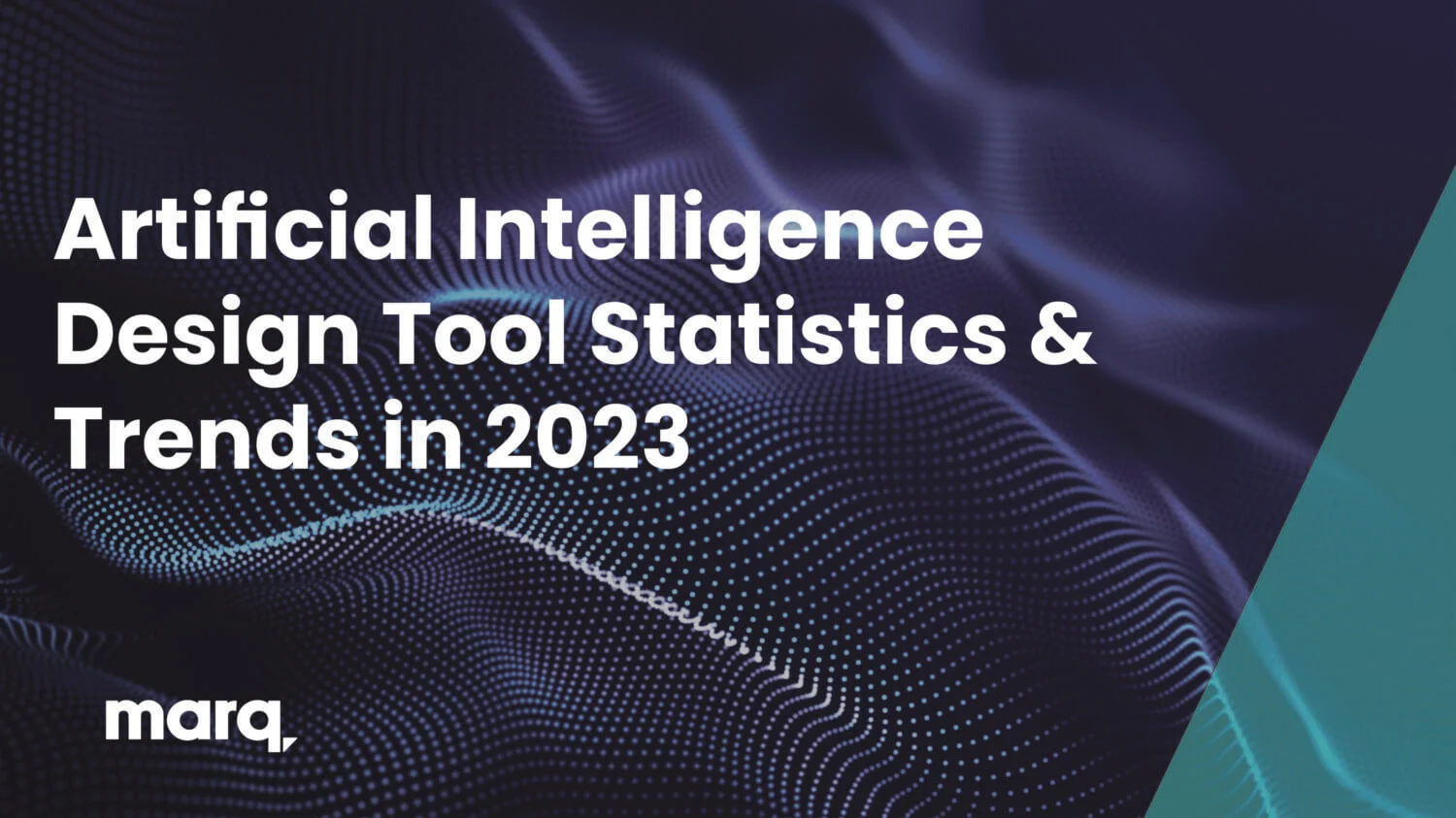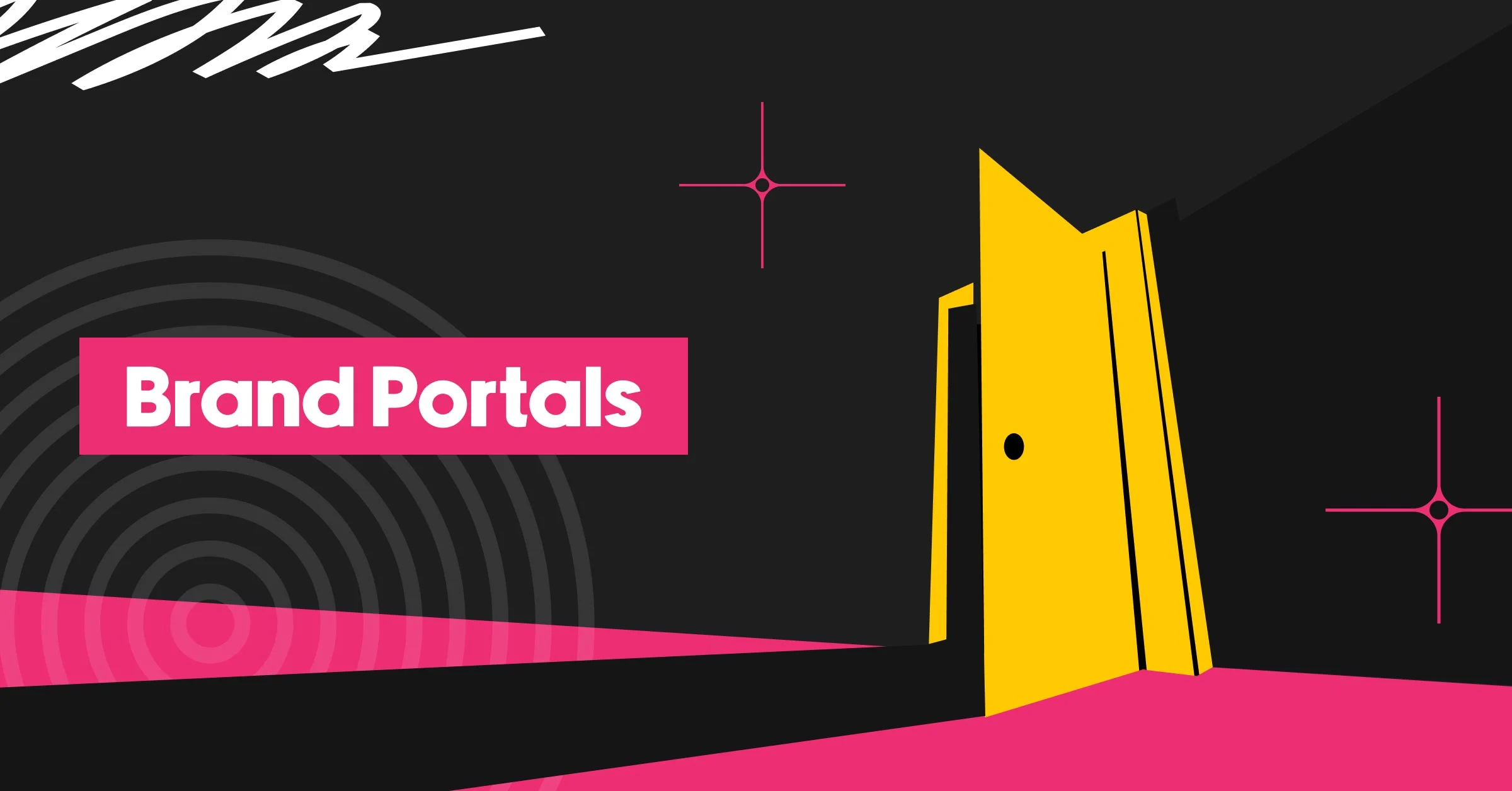This is a list of artificial intelligence (AI) design tools, statistics and trends of their usage, current standing and growth updated through 2023.
In the rapidly evolving world of design, artificial intelligence is making a profound impact.
From Midjourney to Mar, AI design tools are empowering creative professionals to streamline workflows, boost productivity, and create cutting-edge designs with unprecedented ease.
We’ll explore these data-driven insights and how these tools are revolutionizing the way we conceptualize, iterate, and execute design projects. While this list is by no means exhaustive, it is rather comprehensive to give you a good idea of some leading Design tools that are utilizing AI to their advantage and the advantage of their users.
Contents
The Rising Demand for AI Design Tools
Interest in AI design by State in the United States
The Impact on Design Efficiency
Enhanced Personalization and User Experience
The Power of AI in Creativity
AI Design Companies, Trends, and Statistics
- Figma
- Adobe Firefly, XD & Illustrator
- Sketch
- Axure RP
- Marq
- Framer
- InVision
- Proto.io
- Midjourney
- Canva
- Dream Studio
- CorelDRAW
- TopazLabs
- Uizard
- Autodraw
Growth in AI-Integrated Design Platforms
Data Security and Privacy Concerns
Bridging the Gap Between Designers and Developers
Conclusion
The image below comes from explodingtopics.com showcasing some of the high level statistics of the AI industry as a whole including all types of generative AI including but not limited to design.
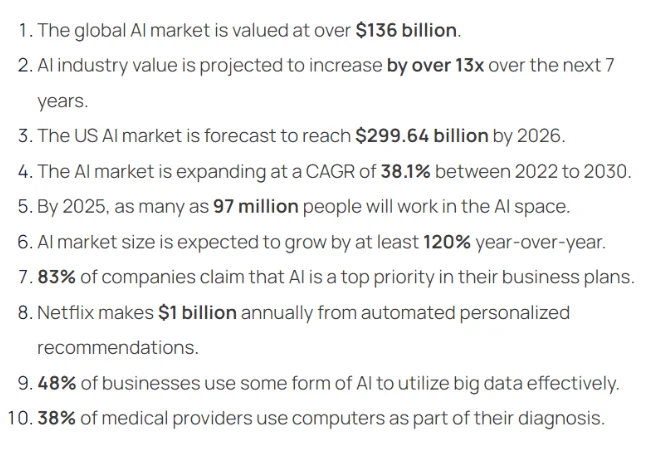
The Rising Demand for AI Design Tools
The demand for AI design tools has witnessed an unprecedented surge in 2023. According to Google trends, the search volume for AI design related tools and software has increased 1700% from 2022 to 2023 alone.

Interest in AI design by State in the United States
The interest in AI design when broken down into sub topics and related queries spans from ai image generation to Ai design tools that allow teams to take components of AI and marry them to their own brand and designs speeding up and making more efficient their own design teams and processes.
The interest in AI design across the United States is ubiquitous. The regions/states in the top 5 positions of high interest are; 1. District of Columbia 2. California 3. Washington 4. Hawaii and 5. Utah

The Impact on Design Efficiency
AI design tools have proven instrumental in streamlining design workflows. By automating repetitive tasks and offering real-time suggestions, these tools save designers valuable time and effort. Surveys indicate that a significant percentage of design professionals believe that AI has significantly improved their design efficiency, allowing them to focus on more creative and strategic aspects of their work.
IDC suggests that generative design, even more broadly generative AI, finds value in creating something for humans to react to. With AI’s initial start and its recommendations overseen by humans creates increased velocity and efficiency in creating on-brand design.
Enhanced Personalization and User Experience
In the age of personalized experiences, AI design tools are helping designers cater to individual user preferences more effectively. By analyzing user data and behavioral patterns, AI-powered tools provide valuable insights into user preferences and expectations. This data-driven approach enables designers to craft highly tailored and user-centric designs, resulting in enhanced user experiences.
Per Gartner, “A good experience designer brings user insights from research as well as knowledge of human psychology – and blends them with the organization’s product vision”. They continue, “Advances in AI will mean that designers spend less time building . . and more time focusing on solving real problems for users”.
The Power of AI in Creativity
Contrary to the misconception that AI stifles creativity, statistics reveal that AI design tools foster innovation and creativity. With AI-generated design suggestions and intelligent pattern recognition, designers are inspired to explore novel ideas and experiment with new concepts that they may not have considered otherwise. This synthesis of human creativity and AI assistance leads to groundbreaking and aesthetically captivating designs.
AI Design Companies, Trends, and Statistics
As mentioned above, the interest in AI design is wide because the use case of artificial intelligence in design is also quite wide. While AI image generation alone has made massive strides in 2023, for many companies looking to streamline their own design teams and processes, the AI images alone don’t fit the bill. Which is why there are design tools now that offer AI as a part of the complete design tool. *Data provided by Crunchbase, SEMrush, and Google Trends.
1. Figma:
Figma is a collaborative design tool that allows teams to work together on UI/UX design, prototyping, and user testing. It has plugins and integrations that support AI design-related functionalities.
Figma has witnessed a significant rise in popularity among designers, with over 4 million users as of September 2021. Its collaborative features and cloud-based nature have contributed to its widespread adoption.
See Figma’s cumulative fundraising over time and note the 150% increase year over year Q2 of 2020 to Q2 of 2021.
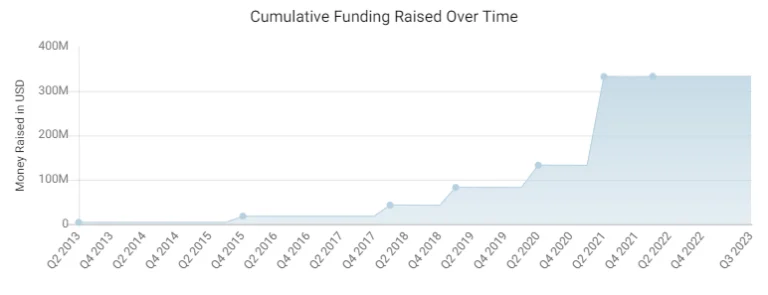
Also note the considerable increase in organic presence up 115% year over year (June 2022 to June 2023, website traffic coming from organic search results in search engines due to content and features put out meeting their audience needs.

Below you can see the increase in brand awareness by the search volume trend in Google for the keyword “Figma”. While relative to its own position, from June 2021 to June of 2023, Figma has seen a 355% increase in awareness and demand.

2. Adobe Firefly, XD & Illustrator:
We would be remiss to not include the vast world of adobe when talking about design tools. And Adobe has certainly not missed the AI train. With several products fulfilling different needs and niches, Adobe has cast a wide net helping many different audiences. The catch, you’ll pay quite the penny to get all the features from all the products. Adobe Firefly is an AI design tool that can generate images from text. It is still in beta, which means you may have to get on a wait list and be a subscriber to other Adobe tools to get a chance to test it out.
Adobe XD is a vector-based design tool that supports designing and prototyping experiences for websites, mobile apps, and more. It integrates with Adobe’s Sensei AI technology to assist designers with content-aware layout suggestions and other AI-powered features.
Adobe XD has gained prominence as part of the Adobe Creative Cloud suite, and by September 2021, it had over 3 million users. Adobe’s reputation and continuous updates have attracted designers to use XD as their go-to design and prototyping tool.
Adobe Illustrator is a vector graphics editor that is widely used in various design fields. Although it’s not an AI-specific tool, Adobe has been incorporating AI features into its Creative Cloud suite, which includes Illustrator.
Check out the increased organic performance for Adobe over the last 7 years with the amount of organic search keywords they’ve captured. They’ve seen a 32% YoY increase with an 80% increase in 2 years and a whopping 886% increase 7 years.

Interestingly enough, despite the increased performance with their site, the volume of people searching adobe in general has tapered in recent years as seen by the trendline below representing users searching for “adobe” in Google. This could be due to the generic parent brand vs each individual product that they offer which was not taken into consideration.

3. Sketch:
Sketch is a macOS-based design tool popular among UI/UX designers. While it doesn’t have native AI capabilities, it can be enhanced with various plugins that incorporate AI functionalities.
As of September 2021, Sketch had a strong presence in the macOS-based design tool market, with over 1.5 million active users. It remains one of the top choices for UI/UX designers who value its performance and ease of use.
See the organic performance trend of the last 5 years below. Sketch has seen a 7% growth in organic presence year over year and a 49% increase in 2 years.

Despite its popularity, Sketch has seen a rather consistent decline in trend for overall volume of searches for its primary branded keyword “sketch” (segmented by the company name vs the word itself).

4. Axure RP
Axure RP is a prototyping and wireframing tool that allows designers to create interactive prototypes for websites and applications. It may not have native AI features, but it can be integrated with external AI tools.
Below you can see Axure RP has seen some volatility over the last 5 years performing quite a bit lower in the organic search results of Google than it has. While it is currently trending positively, it has some ground to make up for. Axure saw a 3% drop year over year and a 29% drop from 2 years prior.

The trend of search volume tells a similar story with the primary branded keyword “axure rp” seeing a negative trend through the last couple years.

5. Marq:
Marq is an innovative design tool that has been gaining significant traction in the design industry. Leveraging cutting-edge artificial intelligence capabilities, Marq aims to revolutionize the way designers conceptualize, create, and iterate on their projects. In this section, we explore some key statistics and emerging trends that highlight the impact of Marq in the design landscape.
Marq has seen a remarkable surge in user adoption. Within just six months, Marq’s user base has grown to over one million active users, making it one of the fastest-growing AI design tools on the market. Designers from diverse backgrounds, including UI/UX designers, graphic artists, and marketers, have embraced Marq for its intuitive AI-driven features.
While Marq has undergone a relatively recent rebrand to an entirely new domain, they’ve retained much of their previous organic performance, and have since increased their brand presence in the market as seen by the short period of time available in the trendline below.
While it’s not an apples to apples comparison as there’s a bit of a ramp up period to anticipate with a new brand going live, Marq boasts a 6062% increase YoY. Let’s factor in the ramp up taking a full month’s worth of data and comparing it to the next closest month this year, Marq still shows a 73% increase year over year.

It’s clear from the volume of their branded keyword “marq” in Google trends, that Marq still has opportunity to grow, but is certainly trending positively in the last several years despite the rapidly changing industry, AI, and the market pitfalls with the worldwide pandemic and other recent anomalies.
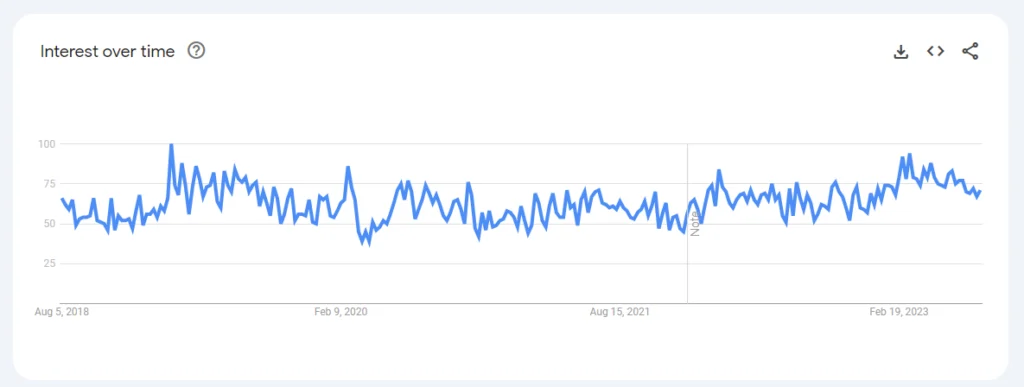
6. Framer:
Framer is a design tool that enables designers to create interactive and animated prototypes. It also offers integrations with AI-powered tools to enhance the design process.
Framer, known for its powerful prototyping capabilities, had gained traction among designers and had over a million users by September 2021.
Note the cumulative funding raised over the last 5 years, with 267% increase from 2017 to 2018 and an additional growth of 81% from Q1 to Q3 of 2023.
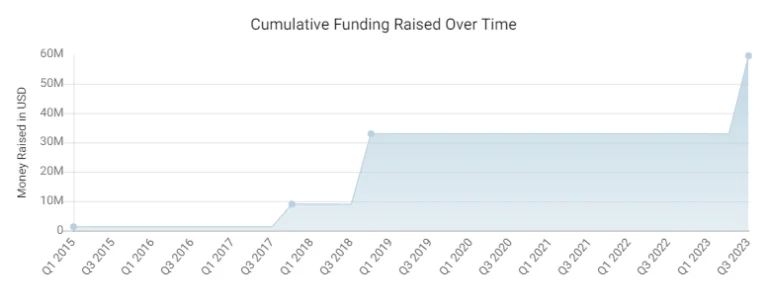
Below you can see that despite a considerable setback of website performance, Framer has regained and continues to thrive in the acquisition of new awareness through the keywords obtained for organic search. From their low point to their current high (1 year of time) they’re up 621%. Looking at the year prior before the set back, Framer is seeing a 98% increase from 2 years ago.

7. InVision:
InVision is a digital product design platform that allows teams to collaborate on design, prototyping, and user testing. It integrates with various AI plugins and external AI tools to facilitate the design process.
InVision has been a dominant player in the digital product design platform market, boasting over 7 million users as of September 2021. See the growth and anticipated growth manifest in the cumulative funding that they’ve raised over the last 10 years. Certainly a consistently healthy and robust measured effort trending positively. According to crunchbase their fundraising was up 48% year over year from 2017 to 2018 and has sustained through the years.
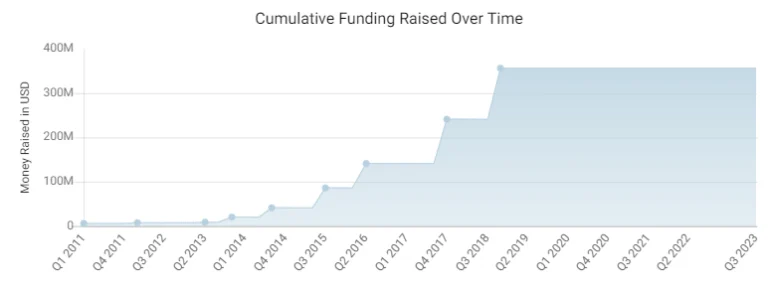
InVision’s website, however, can’t say the same. While organic presence in Google is not a primary indication of a business’ health, it can be an indicator of spending money in the right place, being aware of important aspects like digital presence, and potentially other factors like overall industry interest. Year over year, InVision has seen a 26% drop in organic presence, and 52% down from 2 years prior.

The volume trend in Google trends corroborates the trend of site performance. While the site’s ability to rank and put out the right content to meet its audience appropriately is one side of the coin, the other is the awareness and demand for a brand which can be seen through the volume of searches. InVision (company segment) has seen a consistent decrease over the last 5 years.

8. Proto.io:
Proto.io is a prototyping tool used for creating interactive prototypes for web and mobile applications. While it doesn’t have built-in AI capabilities, it can be combined with external AI tools.
Proto.io joins the group of companies and AI design tools that did not fare well through the storms of the pandemic. They are down 15% year over year for 2023, 49% from 2 years prior and even more from the year before.

The google trend graph below is one typically seen by companies or keywords with considerably low volume. The volatility and difficult to see trend line is due to the low volume of total searches for the brand. Unfortunately for Proto.io, with the little volume that is there, the trend is clearly negative.

9. Midjourney:
Midjourney has certainly found popularity among many online groups utilizing the platform discord to interact with it. It has acquired quite the reputation for being the leader in the image generation space with considerable enhancements in its abilities in a short amount of time. However, the tool can be difficult to reign in identifying the right prompt and ultimately getting an image out of it that is more than just fun to see.
Midjourney is a nonprofit organization that has clearly come out of nowhere and not only entered the scene but is leading it when it comes to AI image generation. There isn’t yet a full year of data to compare to, and any month compared to the prior is a considerable increase.

It’s clear from Google trends that while Midjourney saw some quick wins in the AI design space, it’s experiencing some trouble with the frustrations to use their product for anything meaningful. This illustrates a primary separation between design tools using AI to enhance an already valuable product to individuals and businesses and those that are banking on a potentially quick and fleeting model that will require far more iteration before becoming valuable on their own.

10. Canva:
Canva is a user-friendly graphic design tool that offers AI-powered features like automatic design resizing and layout suggestions.
Canva had over 60 million active users globally by September 2021, indicating its widespread appeal among non-professional designers and small businesses.
Canva has clearly seen success in the past few years despite the hard times that other tools and companies have seen. Check out the fundraising trend below. It illustrates not only consistent growth and progress, but a considerable jump to double the funding from Q1 to Q2 of 2021. This not only illustrates Canva’s growth but their anticipation to continue to grow.
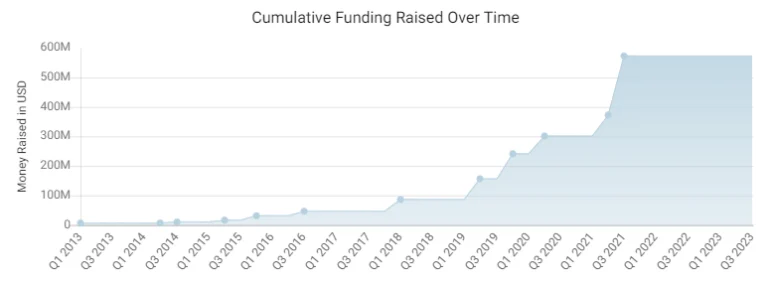
Canva’s site performance is another voice in the positive story of the path that they’re on. As seen in the image below, the site’s organic performance reiterates not only consistent growth, but an increase in pace over the last 2 years. Good signs of product meeting users where they are, understanding their needs and fulfilling them. Also a positive indication of spending money in the right places to fuel their momentum. Canva is up 65% in organic presence year over year, and up 106% from 2 years prior.

Google trends show some ups and downs consistent with releasing new features and possibly other PR efforts. Despite some fluctuations in volume the trend is overwhelmingly positive and adds its voice to the strength of their growth and progress.

11. DreamStudio:
DreamStudio is another prompt based, text-to-image AI image generation tool focussed on minimizing the energy required to generate their images. While the output may not initially seem as robust as some of it’s competitors, DreamStudio boasts an iterable version of images making it easy to edit and upscale.
DreamStudio is rather new to the seen as made apparent to their trended organic presence below. It would appear that while they saw considerable initial success, they’ve hit massive headwinds that could be indicative of getting some items out of priority.

The volume of searches around their brand was a little difficult as it appears that Google hasn’t yet identified a segment for their brand name that is separate from the generic search term. However, looking at the shape of the volume over the last year, it appears to correlate with the initial release and the drop in interest.

12. CoreIDRAW:
CorelDRAW is another vector graphics editor that focusses on illustration, layout, photo editing, and typography tools. They offers various design that including some AI-assisted functionalities.
While CoreIDRAW has been around for a while, they’ve managed to continue to grow their online presence and continue to provide content and features that meet the needs for a select user base which is apparent from their ranking and keyword acquisition of their website. CoreIDRAW shows a 6% increase year over year in organic presence, and 3% drop from 2 years prior.

While not explicitly negative, it’s clear that the volume trend indicating awareness and demand has seen a negative trend through 2021 and then some increased volume that has slowly trended negatively since. Despite this, it would seem that CoreIDRAW continues to thrive in the AI design tool space.

13. TopazLabs:
TopazLabs is a design tool that uses AI for image editing. Primarily to enhance the quality of images and videos with some pretty impressive results.
TopazLabs has seen some ups and down over the years, but is currently thriving and positively trending with their audiences providing the right kinds of content to be promoted in the search engine results pages and driving valuable traffic to their site. They grew 87% in organic presence year over year.

Google trends shows a very positive trend corroborating the story of their site’s positive performance. It’s clear that the volume of those aware and searching for the brand has bee on a steady increase.

14. Uizard:
Uizard is an AI design tool that can be used to create some pretty robust products like web applications, mobile apps, as well as desktop software with a pretty easy-to-use editor.
It’s clear from Uizard’s funding raised over the last 5 years, that they’re continuing to grow and anticipate further growth. They’re showing a massive 417% increase from quarter to quarter in 2021.
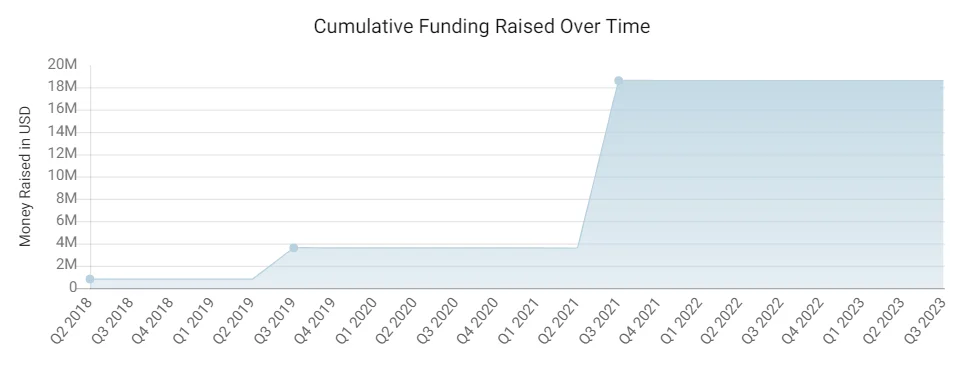
It appears that Uizard has been around for a few years, and while progressing, it hasn’t really taken off until 2023 where it’s seen considerable growth. Uizard is up 327% year over year in organic presence!

Google trends corroborates the story with minimal search volume seen since 2018, and then in 2023 it appears consistently and trending positively. Whether this is due to some good marketing and well spent PR funds, increased functionality and features or some combination of both, it’s clear that Uizard is making its way into the space and generating some pretty big waves.

15. Autodraw:
Autodraw is the last product we’ll include in today’s list of AI Design Tools trends and statistics. While small, Autodraw has been around for a handful of years and is one of the few to start before the AI boom. Providing value early on, AutoDrawl allows users to illustrate to their heart’s content, and the tool will use machine learning to take a guess at the illustration and then provide a closely related professional version to be used.
From the graph below, it’s clear that Autodraw has been through some ups and downs since its inception. While Autodraw shows a 28% decrease in organic presence year over year, it’s able to boast a 140% increase from 2 years prior which is still a positive trend for the lifespan of the company.
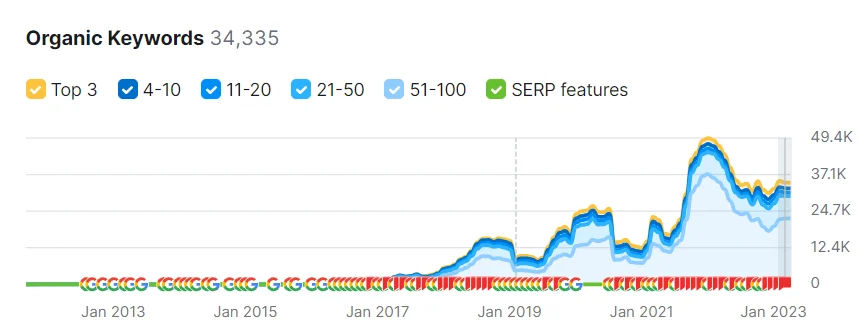
The volume illustrated in Google trends reflects roughly the same story, with a recent drop in interest through the last couple of months.

Growth in AI-Integrated Design Platforms
Major design software companies have recognized the potential of AI in design and are rapidly integrating AI capabilities into their platforms. The inclusion of AI-powered plugins, features, and modules has transformed traditional design software into intelligent ecosystems that support designers in their quest for excellence. Notable players in the industry report a considerable increase in user adoption of AI-integrated tools.
Data Security and Privacy Concerns
As AI design tools rely on vast amounts of data for analysis and decision-making, data security and privacy concerns arise. Designers and organizations need to address these issues diligently, ensuring compliance with data protection regulations and safeguarding sensitive design assets. An informed approach to data handling is crucial to ensure trust and confidence in AI design tools.
Bridging the Gap Between Designers and Developers
AI design tools are bridging the gap between designers and developers, fostering better collaboration and communication between the two disciplines. AI-powered design platforms facilitate smoother handoffs by generating design specifications and assets that developers can readily work with. This alignment leads to more efficient development cycles and reduces friction in the design-to-development process.
Conclusion
The advent of AI design tools has ushered in a new era of creativity and efficiency in the design industry. As AI technology continues to advance, designers can expect even more sophisticated tools that amplify their capabilities and enhance the overall design process. By embracing data-driven insights and combining them with their creative vision, designers can harness the full potential of AI design tools to shape the future of visual communication and user experiences. As we move forward, the harmonious collaboration between human ingenuity and artificial intelligence will continue to redefine the boundaries of design innovation.
AI Design Tool Statistics FAQs
AI design tools refer to a new generation of design software that incorporates artificial intelligence and machine learning capabilities. Unlike traditional design software, AI design tools can automate repetitive tasks, offer intelligent design suggestions, and analyze user data to enhance the user experience. These tools empower designers with data-driven insights, enabling them to create more personalized and efficient designs.
AI design tools improve design efficiency and productivity by automating time-consuming tasks, such as generating design variants, creating layout suggestions, and automating design handoffs to developers. By leveraging AI-powered features, designers can focus on the creative aspects of their work, leading to faster design iterations and better overall productivity.
According to market research, the global AI in design tools market has witnessed significant growth in recent years. Several leading AI design tools have amassed millions of users, indicating their popularity and widespread adoption in the design community. Surveys also reveal that a substantial percentage of design professionals report increased design efficiency and improved user experiences through AI-powered design solutions.
AI enables designers to create more personalized user experiences by analyzing user data and behavioral patterns. Designers can use AI-driven insights to understand user preferences, optimize content layouts, and offer personalized recommendations. By tailoring designs to individual users, designers can deliver more engaging and relevant experiences, ultimately leading to higher user satisfaction and loyalty.
